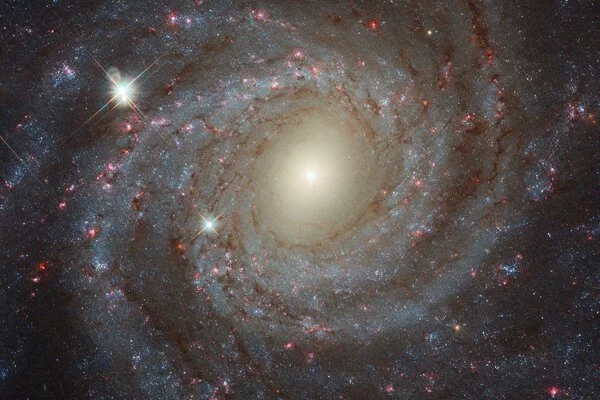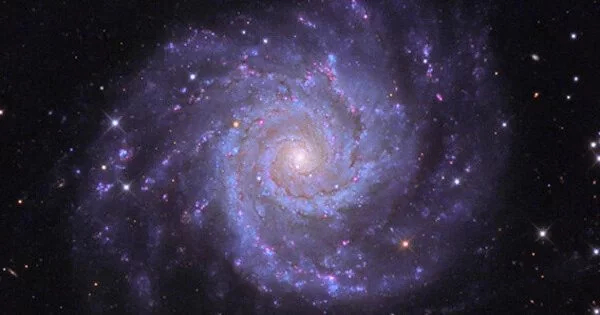The most distant stars in our Milky Way galaxy are not located halfway to the Andromeda galaxy, which is located approximately 2.5 million light-years away. Astronomers have discovered stars in the Milky Way that are hundreds of thousands of light-years away, but they are still within the bounds of our own galaxy and not located halfway to another galaxy.
In the stellar halo of the Milky Way, astronomers discovered more than 200 distant variable stars known as RR Lyrae stars. The most distant of these stars is more than a million light years away from Earth, which is nearly half the distance between us and our neighboring galaxy, Andromeda, which is about 2.5 million light-years away.
The RR Lyrae stars’ characteristic pulsations and brightness make them excellent “standard candles” for measuring galactic distances. The researchers were able to trace the outer limits of the Milky Way’s halo thanks to these new observations.
“This study is redefining what constitutes the outer limits of our galaxy,” said Raja GuhaThakurta, professor and chair of astronomy and astrophysics at UC Santa Cruz. “Our galaxy and Andromeda are both so massive that there is hardly any space between the two galaxies.”
GuhaThakurta explained that the stellar halo component of our galaxy is much larger than the disk, which is about 100,000 light years across. Our solar system is located in one of the spiral arms of the disk. A central bulge in the disk is surrounded by the halo, which contains the galaxy’s oldest stars and extends hundreds of thousands of light years in all directions.
We were able to use these variable stars as reliable tracers to pin down the distances. Our observations confirm the theoretical estimates of the size of the halo, so that’s an important result.
Raja GuhaThakurta
“The halo is the hardest part to study because the outer limits are so far away,” GuhaThakurta said. “The stars are very sparse compared to the high stellar densities of the disk and the bulge, but the halo is dominated by dark matter and actually contains most of the mass of the galaxy.”
The new study was led by Yuting Feng, a doctoral student at UCSC who collaborated with GuhaThakurta on the research. Their findings will be presented in two talks at the American Astronomical Society meeting in Seattle on January 9 and 11.
Previous modeling studies, according to Feng, predicted that the stellar halo should extend out to 300 kiloparsecs, or 1 million light years from the galactic center. (Astronomers use kiloparsecs to calculate galactic distances; one kiloparsec equals 3,260 light-years.) Feng and his colleagues discovered 208 RR Lyrae stars ranging in distance from about 20 to 320 kiloparsecs.
“We were able to use these variable stars as reliable tracers to pin down the distances,” Feng said. “Our observations confirm the theoretical estimates of the size of the halo, so that’s an important result.”

The findings are based on data from the Next Generation Virgo Cluster Survey (NGVS), a program using the Canada-France-Hawaii Telescope (CFHT) to study a cluster of galaxies well beyond the Milky Way. The survey was not designed to detect RR Lyrae stars, so the researchers had to dig them out of the dataset. The Virgo Cluster is a large cluster of galaxies that includes the giant elliptical galaxy M87.
“To get a deep exposure of M87 and the galaxies around it, the telescope also captured the foreground stars in the same field, so the data we used are sort of a by-product of that survey,” Feng explained.
According to GuhaThakurta, the team was able to obtain the most reliable and precise characterization of RR Lyrae at these distances due to the high quality of the NGVS data. RR Lyrae is old star with unique physical properties that cause them to expand and contract in a cyclical pattern.
“The way their brightness varies looks like an EKG — they’re like the galaxy’s heartbeats — so the brightness goes up quickly and comes down slowly, and the cycle repeats perfectly with this very characteristic shape,” GuhaThakurta explained. “Furthermore, their average brightness is consistent from star to star. This combination is ideal for investigating the structure of the galaxy.”
The sky is full of stars, some brighter than others, but a star can appear bright because it is very luminous or because it is very close, and it can be difficult to distinguish between the two. Astronomers can recognize an RR Lyrae star by its characteristic pulsations, and then use its observed brightness to calculate its distance. However, the procedures are not simple. More distant objects, such as quasars, can take on the appearance of RR Lyrae stars.
“Only astronomers understand how difficult it is to obtain reliable tracers of these distances,” Feng explained. “This robust sample of distant RR Lyrae stars provides us with a very powerful tool for studying the halo and testing the current models of our galaxy’s size and mass.”





